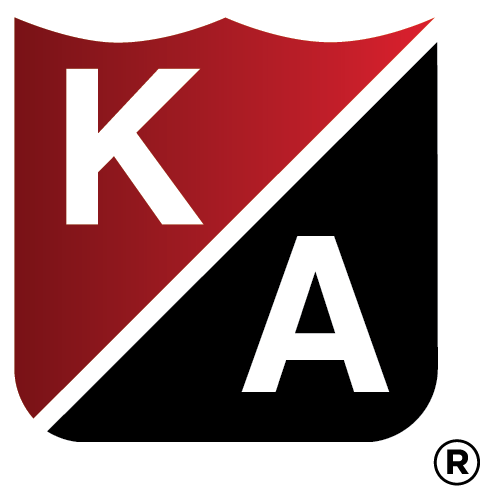We often hear that insurance is boring. It is always the same thing – buy a policy, hope nothing goes wrong, file a claim if needed. Then repeat the following year. However, a short look back provides a very different lens and perspective on what is ahead. Let’s take a look at personal and commercial automobile insurance as an example.
Chapter One – The Start
The first known automobile policy in the US was issued to Gilbert Loomis in 1897 by Travelers Insurance Company. The policy provided coverage if Mr. Loomis’ vehicle killed or injured someone or damaged their property. He purchased a $1,000 policy limit for a premium of $7.50. These initial policies were adapted from “teams” policies that referred to policies for teams of horses and horse-drawn vehicles. It was not until 1905 when the word automobile was used in these new policies. Interestingly, Mr. Loomis went on to be a Travelers policyholder for 60 years.
Unfortunately, there was no coverage in place for some of the earliest known accidents. In 1891 John Lambert hit a tree root in Ohio City, Ohio, causing some damage to his vehicle which became the first reported automobile-related accident. In 1896 Ebeling Thomas become the first known person to be injured by a vehicle, while riding his bicycle in New York City.
In 1899, H.H. Bliss became the first pedestrian killed by an automobile in New York City. The driver of the vehicle was initially arrested, but later released as he was deemed to have had no malice and was not negligent. There was no known insurance available.
Chapter Two – The Evolution
Even though the earliest of insurance coverages were placed prior to the turn of the twentieth century, automobile insurance was not required in any part of the United States until 1927 when Massachusetts became the first state to require coverage. It took decades until that became a widely accepted requirement. In 1947, New York set up the first Motor Vehicle Liability Security Fund to cover automobile insurance company insolvencies, but it wasn’t until the 1950s when other states began requiring the coverage as a condition of vehicle ownership and that did not rapidly accelerate until the 1970s. It wasn’t until 1971 when Massachusetts became the first state to create a no-fault auto insurance plan, and Minnesota did not require automobile insurance until January 1, 1975.
Today, two states (New Hampshire and Virginia) do not require automobile insurance; however, they both do require the vehicle owner to be responsible for the costs of bodily injury and property damage relating to a vehicle accident. Based upon that requirement, the vast majority of drivers in these states do purchase at least the minimum required limits. In Virginia, drivers without insurance are required to pay a fee and generally that fee is higher than basic insurance costs.
Chapter Three – The Digital Transformation
The subsequent changes related to automobile insurance fall into two categories – underwriting and distribution. The distribution chain saw the first significant disruption in the 1990s as the internet and online services became possible. The change started slowly, however a recent survey by J.D. Power showed that 54% of new buyers of auto insurance began that process online. While commercial automobile purchasing is not yet at that level, it is becoming increasingly possible to purchase online. Even though the transaction may be able to be completed online, that process does not eliminate the need for risk consultants to be engaged to help customers understand the complexities of coverages, the various options available, the financial parameters, and the regulatory requirements.
Chapter Four – The Next Level Disruptors
While fully autonomous vehicles may still be out in the horizon, many intermediate levels of automation are already upon us. This includes increasingly common lane departure warnings, automated emergency breaking, and early warning alarm systems. These have been some of the most important safety enhancements in the industry. Underwriting changes are accelerating as well in response to these innovations. The advent of onboard computers has led to increased availability of data. Initially that data has been used in claim and incident reviews to help provide clues to the circumstances surrounding the event. Today, an exponential amount of onboard data, including telematics, cameras, and crash avoidance systems, has started to impact the underwriting process. This trend will likely only accelerate in the coming few years. The cost of repair from an accident will continue to increase due to more complex technology; therefore, insurance companies will expect that this technology also significantly decreases the frequency of claims. The wrong question to ask is “Can we get a discount if we use telematics?” The more important question is, “How soon will most insurance carriers require data from the vehicle to underwriter the risk?” Already, some carriers have automated parts of the underwriting process by adjusting premiums in real time based upon miles driven and geographic range by connecting with onboard data. We expect to see more carriers adjusting the underwriting process to engage with both vehicle usage and driver behavior in determining eligibility for and pricing of coverage. Is your business ready for this evolution? This part of the story may not be more than 2-3 years away from the standard operating model. Preparing for it now is critical for tomorrow.
Chapter Five – The Future is Right Around the Corner
Where does automobile insurance go next? To a great extent, the next set of disruptions to the insurance market will follow the disruption in the transportation industry. Rideshare services are fairly widespread today in the personal transportation space, but how will that transition to the business environment? When will ‘auto for hire’ completely replace the need for owned service delivery vehicles? Will car dealers provide pick-up and delivery services for goods as well as passengers? If businesses no longer need to own vehicles for transporting people or delivery of their own material or product, how will insurance coverage and purchasing change?
And then, of course, the technology advances are heading rapidly towards a world with driverless vehicles. Tesla, Google and others are testing multiple options that will allow for cargo-only vehicles, for example. In fact, the technology may already be ahead of the regulatory environment and social acceptability. We may be less than five years away from the day when a driverless vehicle on the road would not be surprising. We may be less than twenty years away from utilizing driverless on-demand vehicles, both to transport us to work and deliver materials to our jobsites and customers.
Some businesses have begun the transition away from fleet management by asking employees to use personal vehicles with reimbursements. That already has changed the insurance environment because of the exposures related to non-owned vehicles. How will that change further when those non-owned vehicles may be owned by Google and they are called via a phone app to arrive for a delivery or personal transport? While the driver variability of the insurance risk is eliminated, the risk of technology failure or even cyber attacks become very real.
Summary
Insurance may sometimes seem like a slow moving, rarely changing part of a business; however, the speed of change does require more proactive attention than meets the eye. We are barely over 100 years distanced from referring to transportation insurance by names more associated with horses. We are only 50 years away from requirements to maintain insurance. We may be no more than two or three years away from an underwriting process that relies mostly or completely on data that is captured in the vehicle. And we are closer than it may seem to a transformation to a world of driverless vehicles and completely different transportation risks and opportunities. Are you ready for today? Are you preparing for tomorrow?
Please join us for the March episode of ilume for a discussion with Jay Williams, Director of Faculty Development at The National Alliance for Insurance Education and Research. Jay will share his insights into the current automobile insurance industry and his thoughts on the future, which, in many areas, is closer than you might think!



